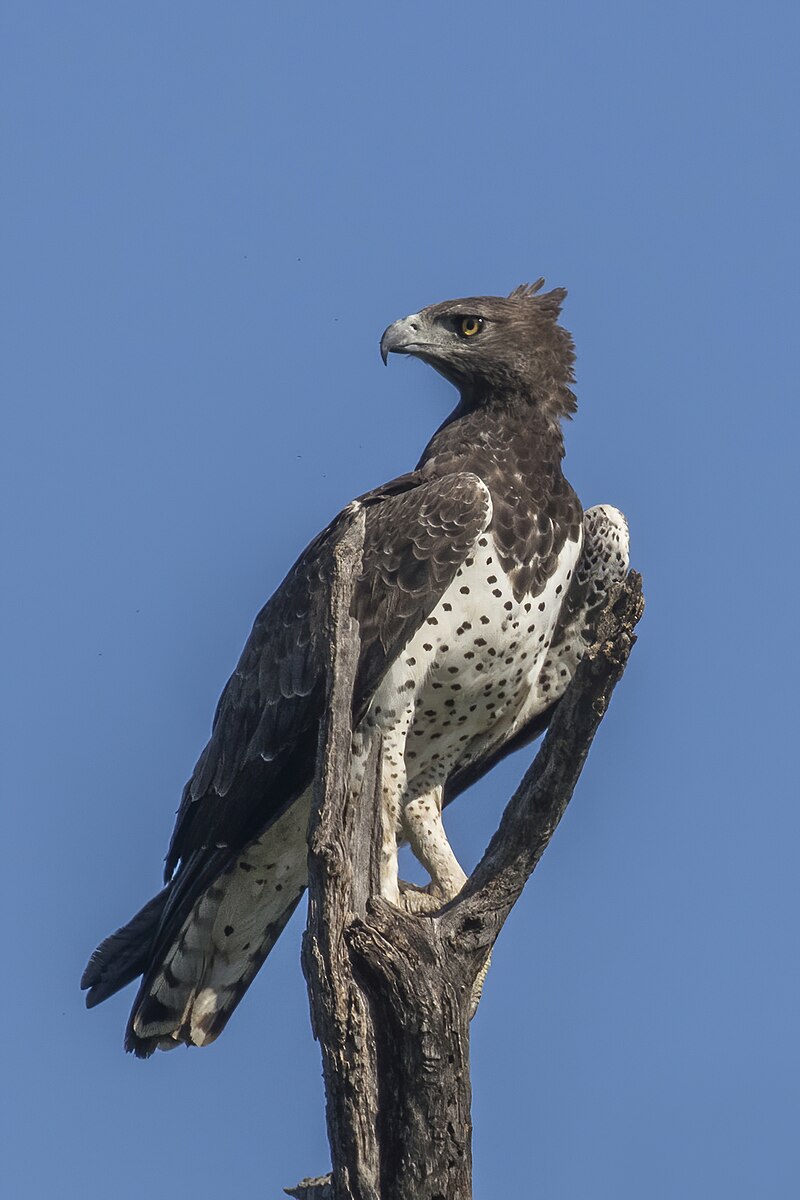Martial eagles, also known as Polemaetus bellicosus, are one of the largest and most powerful birds of prey in Africa. They are known to have a varied diet that includes mammals, birds, and reptiles. However, there is limited information specifically on whether martial eagles eat ducks.
Do Martial Eagles Eat Ducks?
While there is no direct evidence of martial eagles eating ducks, it is possible that they may consume ducks as part of their varied diet. Golden eagles, which are closely related to martial eagles, are known to eat ducks, particularly during the nesting season in Northern Europe. They primarily hunt waterfowl using the “contour flight with short glide attack” technique to surprise the prey before it can take flight or dive. In some cases, golden eagles have been observed capturing ducks in flight.
Given the similarities between martial eagles and golden eagles, it is plausible that martial eagles may also hunt and consume ducks. However, more research is needed to confirm this.
Martial Eagles’ Diet
 Image source: Martial eagle by Charles J. Sharp
Image source: Martial eagle by Charles J. Sharp
Martial eagles are known to have a diverse diet that includes a variety of prey. According to the International Union for Conservation of Nature (IUCN), their diet consists of the following:
| Prey Type | Percentage of Diet |
|---|---|
| Mammals | 60-70% |
| Birds | 20-30% |
| Reptiles | 10-20% |
The most common prey items for martial eagles include:
- Hares and rabbits
- Monkeys and baboons
- Antelopes and gazelles
- Waterfowl (such as ducks and geese)
- Bustards
- Francolins (a type of partridge)
- Snakes and monitor lizards
While ducks are not specifically mentioned as a primary prey item, the inclusion of “waterfowl” in their diet suggests that martial eagles may occasionally hunt and consume ducks.
Hunting Techniques of Martial Eagles
Martial eagles are known for their impressive hunting skills and powerful physique. They are capable of taking down prey much larger than themselves, including animals weighing up to 30 kilograms (66 pounds).
Martial eagles typically hunt using the following techniques:
-
Soaring and Gliding: Martial eagles spend a significant amount of time soaring and gliding high above the ground, scanning the landscape for potential prey.
-
Surprise Attacks: When they spot a suitable target, martial eagles will dive down at high speeds, using their powerful talons to capture the prey.
-
Ambush Hunting: Martial eagles may also wait patiently in a concealed location, such as a tree or a rock, and then launch a surprise attack on unsuspecting prey.
-
Cooperative Hunting: In some cases, martial eagles have been observed hunting in pairs or small groups, working together to increase their chances of success.
These hunting techniques, combined with their impressive size and strength, make martial eagles formidable predators capable of taking a wide range of prey, including potentially ducks.
Habitat and Distribution of Martial Eagles
Martial eagles are found in sub-Saharan Africa, with their range extending from Senegal in the west to Ethiopia in the east, and from South Africa in the south to Sudan in the north. They prefer open and semi-open habitats, such as savannas, grasslands, and open woodlands.
Martial eagles are known to be solitary and territorial, with each pair defending a large home range that can extend up to 100 square kilometers (39 square miles). They build large stick nests, often reusing and expanding on the same nest over multiple breeding seasons.
Conservation Status of Martial Eagles
The martial eagle is classified as “Vulnerable” on the IUCN Red List of Threatened Species. Their population is estimated to be between 3,000 and 10,000 mature individuals, with a declining trend.
The main threats to martial eagles include:
-
Habitat loss and degradation: The conversion of natural habitats to agricultural land, urbanization, and infrastructure development have led to a decline in suitable habitat for martial eagles.
-
Persecution: Martial eagles are sometimes killed by livestock farmers who view them as a threat to their animals.
-
Poisoning: Martial eagles may be unintentionally poisoned by consuming prey that has been killed using pesticides or other toxic substances.
-
Electrocution: Collisions with power lines and electrocution on power pylons can also pose a threat to martial eagles.
Conservation efforts, such as habitat protection, anti-poaching measures, and public awareness campaigns, are crucial for the long-term survival of this impressive bird of prey.
Conclusion
While there is no direct evidence of martial eagles eating ducks, it is possible that they may consume ducks as part of their varied diet, given the similarities between martial eagles and their close relative, the golden eagle. However, more research is needed to confirm this. Martial eagles are known to have a diverse diet that includes a range of mammals, birds, and reptiles, and they are capable of taking down prey much larger than themselves using their impressive hunting skills and powerful physique.

